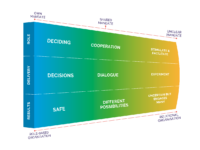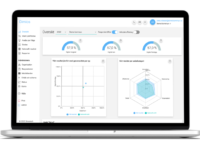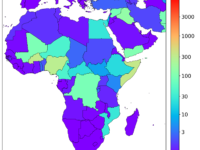Karolinska University Hospital is piloting a new model for nurse-led innovation. The model consists of a framework for enabling nursing organisations to work with innovation and a nurse-led innovation hub concept, where nurses can collaborate with the industry to co-develop solutions for healthcare. Through this, the hospital puts nurses in the driving seat of innovation in healthcare to both develop better solutions for healthcare and promote a sustainable work life for frontline staff.
Case Study Library
Where innovations are collected and shared to disseminate and replicate good ideas

Innovations:
0
This website, as well as any data and map included herein, are without prejudice to the status of or sovereignty over any territory, to the delimitation of international frontiers and boundaries and to the name of any territory, city or area.
We have developed an innovative GDP forecasting application based on Explainable Machine Learning (XML). It allows users to generate accurate and explicable economic forecasts from data sets with multivariate time-series. The application displays novel prediction changes for temporally ordered variable values, which largely increases the ability to explain predictions. It also includes a hybrid machine learning (ML) model that seamlessly combines all algorithms which outperform Sweden's National…
Case Study
Innovation Zones, Facets and Beyond – LIEPT (Lund Innovation Ecosystem Portfolio Tracking)…

To provide a systematic approach for initiating and tracking collaborative development processes over time and inform investment decisions in multi-stakeholder environments, Future by Lund (FBL) has implemented a new model for innovation ecosystem portfolio tracking (LIEPT). The model benefits partnering stakeholders by building strategic competence for scaling solutions and working with innovation portfolios as an approach for governing and developing the ecosystem’s priority areas.
The Swedish Center for Digital Innovation has through a partnership with a small software development firm created a digital maturity assessment (DiMiOS) that has been nationally scaled in Sweden. DiMiOS has so far been used in over 400 public sector organizations. Through DiMiOS, public sector organizations are sharing new insights between and within municipalities, regions and agencies, increasing digital maturity in the entire sector. The assessment also acts as a data pump for research.
The Violence Early-Warning System (ViEWS) is a publicly available data-driven forecasting system at the frontier of research that generates monthly predictions of conflict fatalities up to 36 months ahead – throughout Africa and the Middle East. The project launched in 2017 to help policy-makers and practitioners plan anticipatory action and humanitarian interventions with a transparent and evidence-based approach. It is based at Uppsala University and Peace Research Institute Oslo.
A problem for companies and owners of companies is that they need to engage with many different authorities to conduct their business. Instead of building solutions in a siloed approach we aim to build into the ecosystem by integrating different actors and enabling the business to control their own data using blockchains and digital wallets. This is both a new approach and use of a combination of new technologies that benefits the companies.
New products and new ways of working are needed in order to meet the future challenges in healthcare.
The ability of healthcare professionals to create and innovate new products and working methods is however underutilized. Närhälsan Färgelanda, Primary Health Care Centre, has launched an innovation project in collaboration with private companies that aims at empowering healthcare professionals to create, innovate and develop new products and working methods that meet the future needs.
Sustainability bond with impact-linked return (SBIR) is an innovative funding model to unlock social impact investing which advances the potential to drive public sector change and to attract a broader range of investors, while also financing social infrastructure. The overall goal is to expand investor base for impact investing and build public sector capacity to tackle various social challenges.
In the labour and social services administration, the Trelleborg municipality uses the help of a case handler program to automate certain parts of processes that concern for example processing of financial assistance. The result is less administration and more time for core services.
The lab brings citizens and stakeholders together in a structured design process to form a common realisation of present challenges and pathways to the future. The stakeholders engaged are all identified and relevant to the target group. They are part of a national ecosystem from user, practitioner to policymakers locally, regionally and nationally. The design methods used in the lab are visualizations of processes, gap analysis and aesthetic disruption to enable needed cultural transformation.


